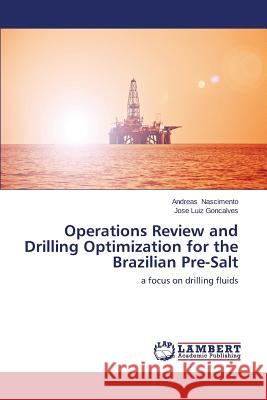Operations Review and Drilling Optimization for the Brazilian Pre-Salt » książka
Operations Review and Drilling Optimization for the Brazilian Pre-Salt
ISBN-13: 9783659494451 / Angielski / Miękka / 2014 / 112 str.
Operations Review and Drilling Optimization for the Brazilian Pre-Salt
ISBN-13: 9783659494451 / Angielski / Miękka / 2014 / 112 str.
(netto: 212,57 VAT: 5%)
Najniższa cena z 30 dni: 223,20
ok. 10-14 dni roboczych
Bez gwarancji dostawy przed świętami
Darmowa dostawa!
This book presents the context of the Brazilian Pre-Salt emphasizing the particularities of the exploration activities undertaken. It is shown the advances in exploration for general deep areas and areas of salt layers as well as complexities related to activities in the Pre-Salt region, in Brazil, frequently located in regions of ultra-deepwater. As case studies it has used the prospect of Parati, Tupi and Carioca for the carbonates drilling optimization approach. By analyzing the provided and reported well-logs, including sonic wave transit time logs, gamma-ray logs and formation bulk density logs, rock mechanics properties are estimated and pore pressure extrapolated for the pre-salt carbonate layers for each specific well. Being the mud weight one of the most important drilling parameters its optimization directly reflects on the rate of penetration. Monte Carlo simulations were also assessed considering parameters such as bit size, weight on bit and hydraulic jet impact force. This book has been developed with the cooperation of the Agencia Nacional do Petroleo, Gas Natural e Biocombustiveis (ANP). The authors hope this book may contribute with the knowledge about Pre-Salt.
This book presents the context of the Brazilian Pre-Salt emphasizing the particularities of the exploration activities undertaken. It is shown the advances in exploration for general deep areas and areas of salt layers as well as complexities related to activities in the Pre-Salt region, in Brazil, frequently located in regions of ultra-deepwater. As case studies it has used the prospect of Parati, Tupi and Carioca for the carbonates drilling optimization approach. By analyzing the provided and reported well-logs, including sonic wave transit time logs, gamma-ray logs and formation bulk density logs, rock mechanics properties are estimated and pore pressure extrapolated for the pre-salt carbonate layers for each specific well. Being the mud weight one of the most important drilling parameters its optimization directly reflects on the rate of penetration. Monte Carlo simulations were also assessed considering parameters such as bit size, weight on bit and hydraulic jet impact force. This book has been developed with the cooperation of the Agência Nacional do Petróleo, Gás Natural e Biocombustíveis (ANP). The authors hope this book may contribute with the knowledge about Pre-Salt.











